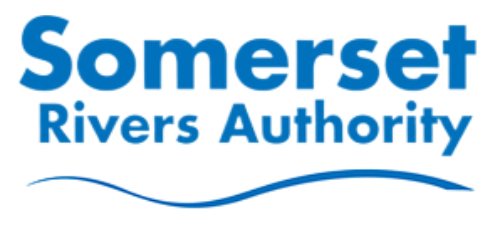In January 2023, Defra announced a decision to implement Schedule 3 of the Flood and Water Management Act 2010 in England. This will introduce a new framework and national standards for the approval and adoption of SuDS in England, and will make Unitary and County Councils SuDS Approving Bodies. The UK Government is currently considering how Schedule 3 will be implemented.
Adoption
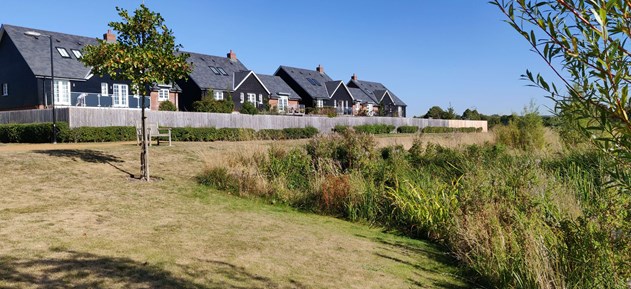 Grassy detention basin in new development
Grassy detention basin in new developmentFor SuDS to be effectively managed and maintained, clear arrangements need to be in place to specify which organisation is responsible. Adoption arrangements are key to the feasibility of a drainage strategy, and can significantly influence the design and location of SuDS features within a development site.
As a result, agreement on which organisation will have responsibility for adoption and maintenance of SuDS should be discussed with the Local Planning Authority and Lead Local Flood Authority. This should be agreed at the pre-application stage of the planning process.
All proposed discharge rates and volumes must be agreed with Somerset Council, as Lead Local Flood Authority, before reaching an adoption agreement with any organisation.
SuDS schemes submitted for adoption will need to meet specific design requirements of the adopting organisation. Somerset Council acknowledges the specific policies of adopting organisations and will work with them to provide coordinated pre-application advice.
Before SuDS are adopted, documentation must be submitted to the adopting authority that the features have been constructed as designed.
There are several routes for adoption of SuDS in Somerset:
- Wessex Water
- Somerset Council Highways
- Private Management Company
- Homeowners
Wessex Water
From 1st April 2020 onwards, water companies are able to adopt SuDS features as part of the surface water sewer network, under the Water UK Sewerage Sector Guidance. A useful summary is given in the Water UK Sewerage Sector Guidance brochure. Full UK design guidance is given in the Water UK Design and Construction Guide. Wessex Water's design requirements for SuDS features and the extents of adoption are given in the Wessex Water - S104 SuDS Guidance.
Early consultation with Wessex Water and the Local Planning Authority will be required, before developing the site layout or masterplan and making a planning application. As with conventional piped systems, the right to discharge must be secured by the developer and transferred to the water company on adoption.
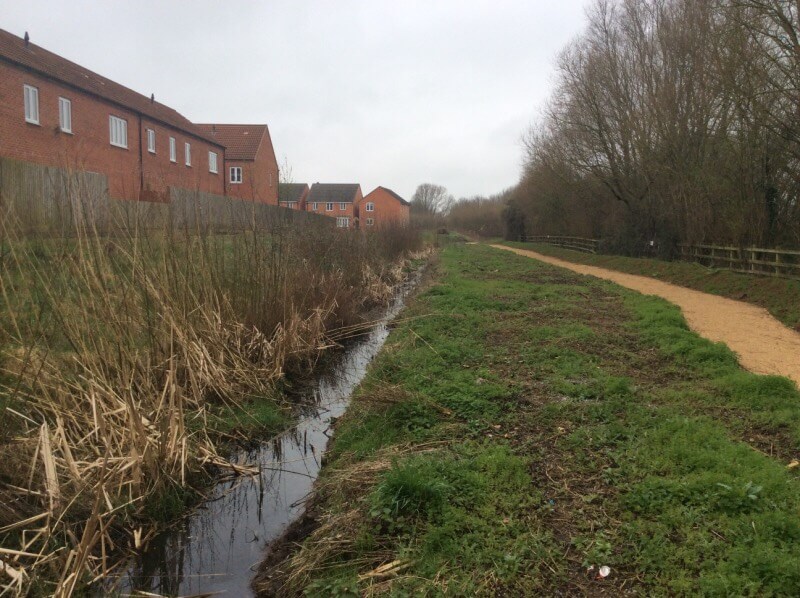 What can be adopted?
What can be adopted?
Wessex Water will consider adoption of a SuDS feature as a sewer, if it meets all of the following criteria:
- It is predominantly (75% or greater) constructed for the drainage of buildings and yards appurtenant to buildings.
- It services more than one building and associated yards.
- It has a channel.
- It conveys and returns flows to a sewer, surface water body or groundwater
- It has an effective point of discharge, with lawful authority to discharge into.
- Note the system may allow for some infiltration and still be a sewer.
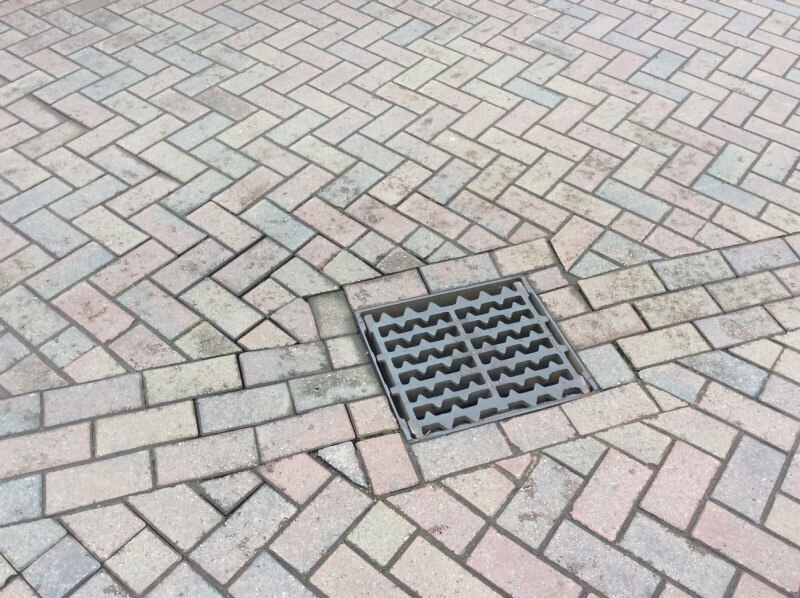 What is not adoptable?
What is not adoptable?
Wessex Water has no duty to accept runoff from new streets, land drainage runoff, or flows from natural watercourses or groundwater. It does not adopt components built predominantly (greater than 75%) for drainage of surface water from highways or the land, those that are part of the structure of a building or highway, and those that are part of a private curtilage. The following SuDS features are generally excluded from adoption:
- Green roofs
- Permeable pavements
- Filter strips
- Rainwater harvesting
- Property level soakaways/infiltration systems
 What is the adoption process?
What is the adoption process?

Highways Authority
Where SuDS drain the highway and can be reasonably accommodated within the highway, they can be considered for adoption by Somerset Council Highways under Section 38 of the Highways Act 1980. A Section 28 Agreement may also be required to carry out works to a public highway.
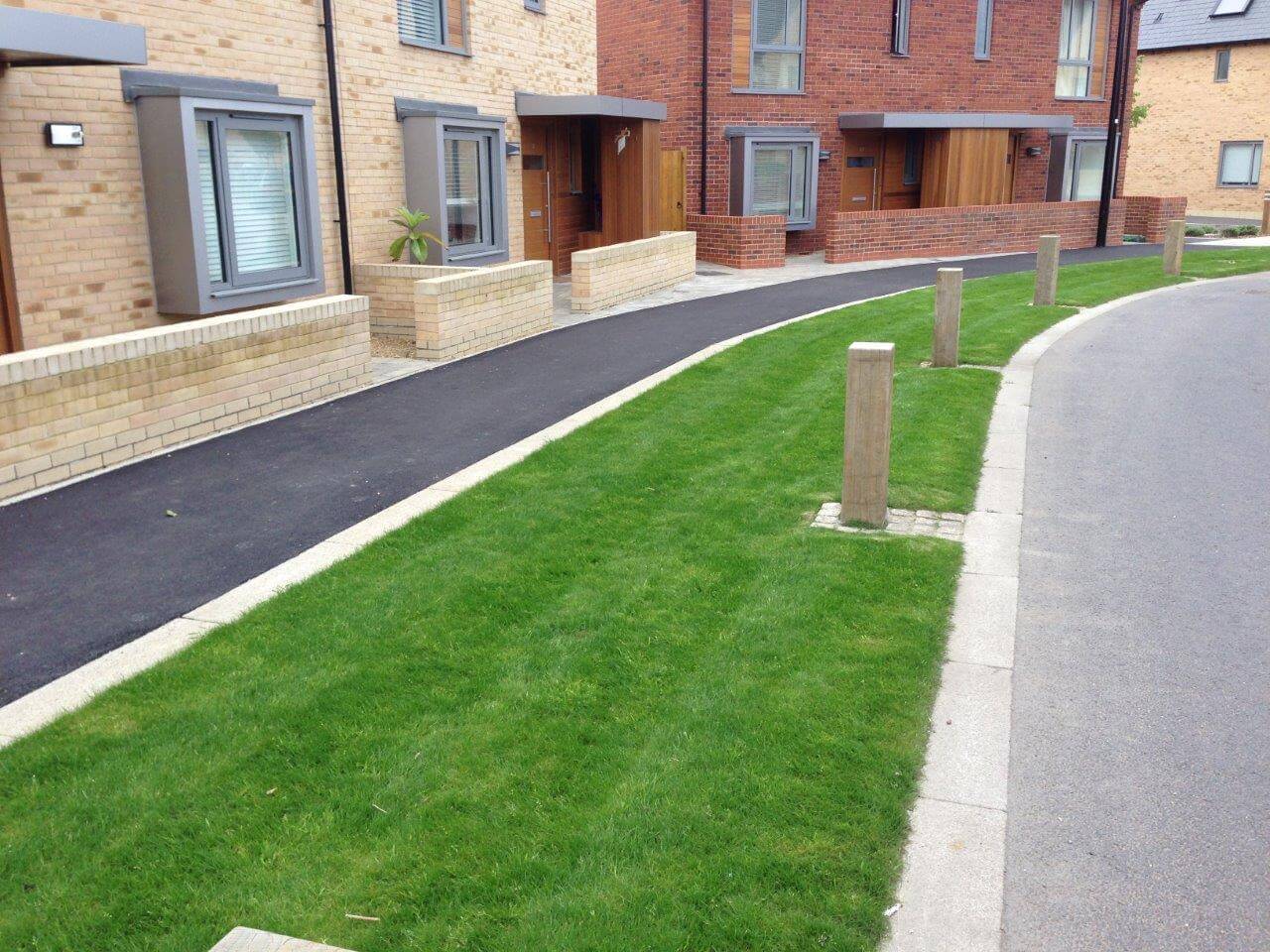 The adoption process
The adoption process
- Discussion of adoption and design requirements with Somerset Council Highways at the pre-application stage.
- Drainage strategy is designed to the agreed standards and is submitted as part of planning application for the development.
- Planning permission is granted (including approval of any reserved matters).
- Section 38 agreement is entered by developer and Somerset Council Highways.
- Extent of the area to be adopted.
- Detailed technical drawings for the SuDS features.
- Programme for the works and adoption.
- Provision for inspection and certification of the completed works.
- Agreement of the features to be included and excluded from adoption.
- Checking SuDS designs.
- Preparing the agreement.
- Inspecting the works.
- Commuted sums for ongoing maintenance of the SuDS features (over a 60-year period).
- Details to be agreed may include:
- Fees are likely to be required for the following:
- SuDS are constructed to the design and standard agreed with Somerset Council Highways.
- Constructed SuDS are inspected and signed off by Somerset Council Highways.
- Maintenance period by the developer (for 12 months).
- Adoption by Somerset Council.
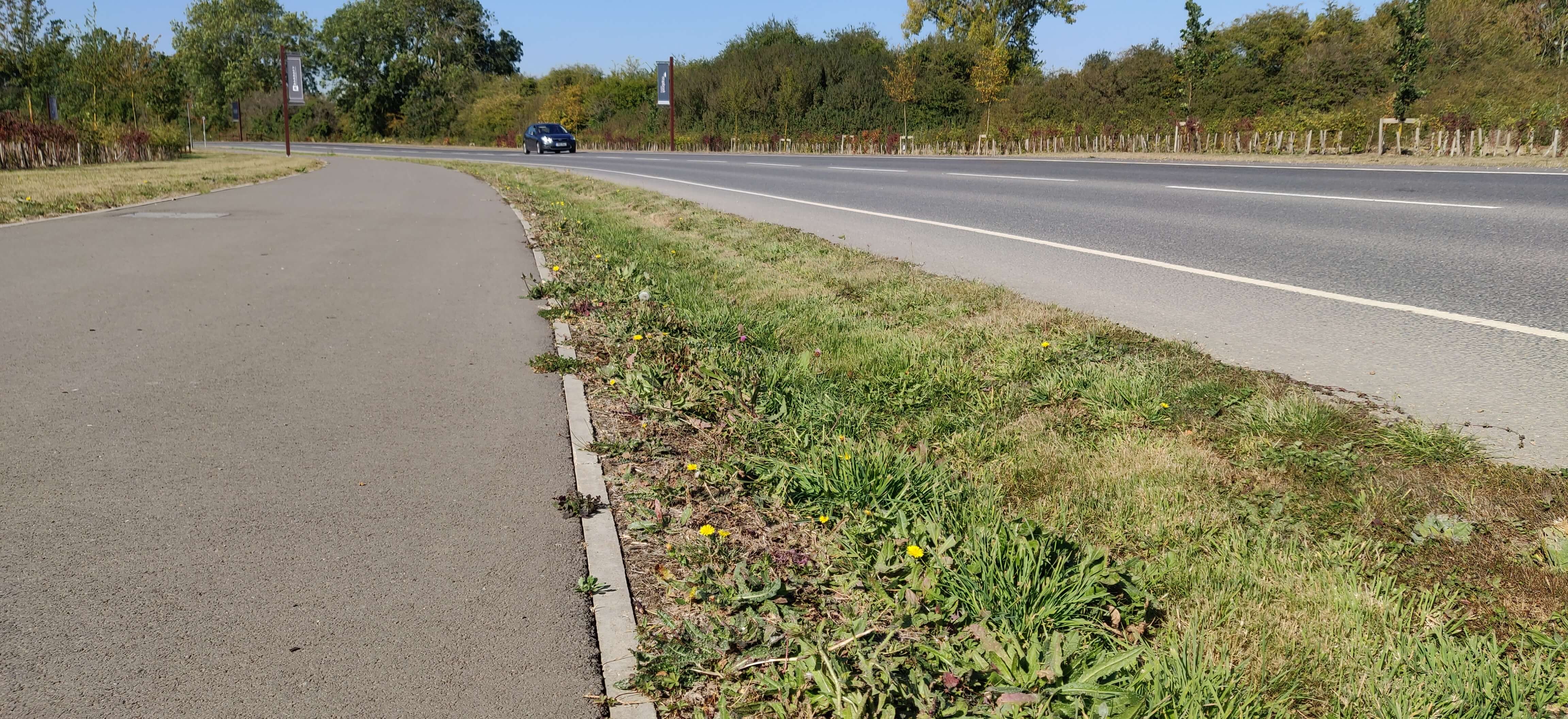 Requirements for adoption
Requirements for adoption
- Designated access for maintenance must be incorporated into the SuDS design.
- SuDS will only be adopted where it is demonstrated that they can be easily and cost-effectively maintained.
- Somerset Council Highways currently do not adopt permeable paving.
- Please note that the approach to adoption of SuDS by Somerset Council Highways is currently under review. It will be updated within the emerging Highways Asset Management Plan.
- The current Transport Asset Management Plan (TAMP) outlines how transport assets in Somerset are assessed and managed.
Private management company
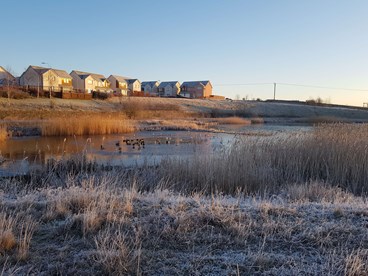 Large landscaped pond in new development
Large landscaped pond in new developmentDevelopers can retain ownership and maintenance of SuDS. However, more often, arrangements are made for a private management company to take on the responsibility for maintenance of SuDS and the public spaces on developments.
A detailed maintenance and operation plan must be in place to establish how the private management company will manage the SuDS components. It will also specify how often maintenance works will be carried out.
Management of SuDS features is usually funded by a commuted sum (a "one off" payment for future management), or a periodic service charge to homeowners.
Difficulty can arise if that the private management company becomes insolvent, and the SuDS features become unmanaged, orphaned assets. To prevent against this, the site developer can take out an assurance bond.
Homeowners
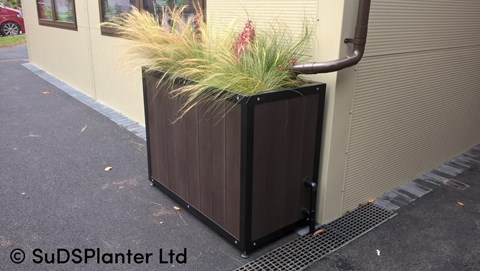 Raingarden planter receiving roof drainage
Raingarden planter receiving roof drainageWhere SuDS are located within the privately owned curtilage of a property, the responsibility for ownership and maintenance of the SuDS components, falls to the homeowner.
Maintenance of SuDS within private property cannot be guaranteed, particularly when the property changes hands. For example, varying homeowner tastes can lead to permeable paving can be replaced with block paving, or a raingarden being removed during a property extension.
If the drainage system is unable to function as designed, it poses a risk of flooding to the property itself, to neighbours, and to properties outside the development site. This in turn places an undue burden on Somerset Council as Lead Local Flood Authority to enforce maintenance.
If homeowner management of SuDS is proposed within a development, homeowners must be clearly informed about the SuDS for which they are responsible. They must also be shown how the SuDS work and what may affect their function. The responsibility for retaining and managing the SuDS features should be shown on the deeds for the property.

